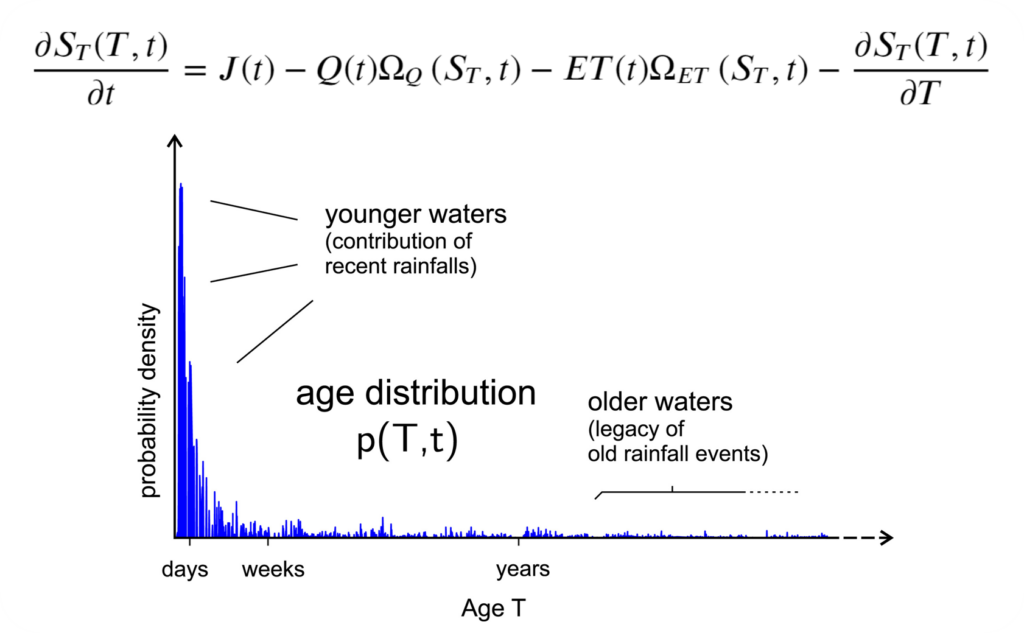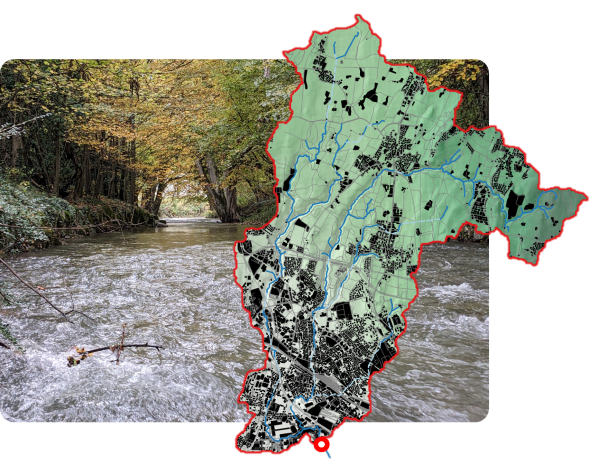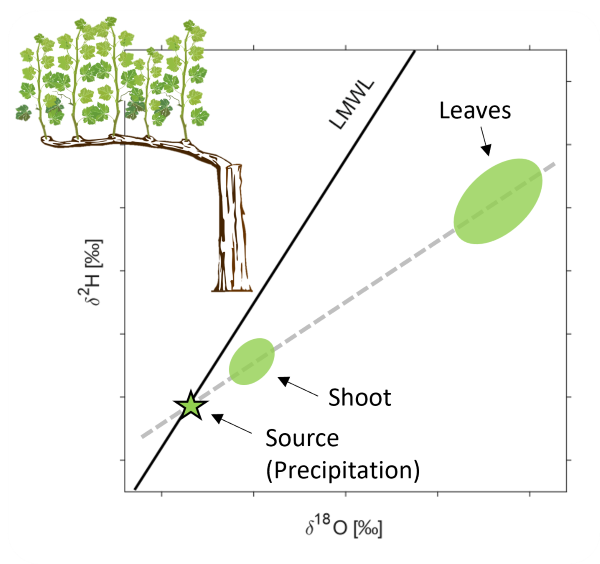
Water Age and Transit Time Distributions
Streams react quickly to rainfall events, yet they transport significant amounts of “old” water, which was stored over timescales of days to years in the landscape. Similarly, vegetation may transpire water that have been stored in the soil for long periods of time before being uptaken. The “age” of water is useful to understand streamflow generation processes, water quality and vegetation water sources. We develop theory and models to describe the temporal variability of water age distributions.
Key publications: Miazza & Benettin (2025), Benettin et al. (2022); Kirchner, Benettin & van Meerveld (2023); Benettin & Bertuzzo (2018).
GitHub pages: TTDstudies; tran-SAS.

Solute Transport in Catchments
Catchments receive solutes from the atmosphere and produce solutes through mineral weathering. Water flowing through a catchment transports these solutes to streams and lakes. The chemical composition of streamwater is very dynamic, reflecting the temporal variability in streamflow generation processes. We use models based on time-variable water age distributions to understand and predict the chemical composition of streams.
Key publications: Rakonjac et al. (2025)
Druhan & Benettin (2023); Benettin, Fovet and Li (2020).

Isotope Ecohydrology
Tracking water fluxes and their interaction with vegetation is impossible without the use of tracers. Water stable isotopes are a powerful tool that allow us to understand which water (i.e. shallow or deep, old or young) is used by vegetation and which water recharges aquifers or flows to streams. We carry out field work in experimental vineyards where we investigate water circulation through water stable isotopes. We model the partitioning between “blue” and “green” water fluxes. We also model isotope fractionation processes.
Key publications: Benettin et al. (2025); Nehemy, Benettin et al. (2022); Asadollahi et al. (2022); Benettin et al. (2021a, 2021b); Benettin et al. (2018).
Berlin case study web platform: Water-Age-Neutral Habitats

Soil Column Experiments
In open environmental systems, tracing water fluxes can be extraordinarily difficult due to complexity of the subsurface architecture and the unknown boundary conditions. Controlled experiments on soil columns can be conveniently used to work on a realistic yet simplified hydrologic system. We carry out experiments on field and lab soil columns, to understand flow pathways, solute reactivity and water-vegetation interactions.
Key publications: Miele, Benettin et al. (2023); Benettin et al., (2021a); Asadollahi et al. (2020); Benettin et al. (2019).
Funded Projects
- 2022-2025 TRACET, “Tracing the origins of transpired waters: theoretical developments and application to a vineyard in the Chianti region”, SNSF-COST 2021
- 2022-2024 WATRES, “A Data-Driven approach to estimate WATershed RESponses”, Swiss Data Science Center 5th call